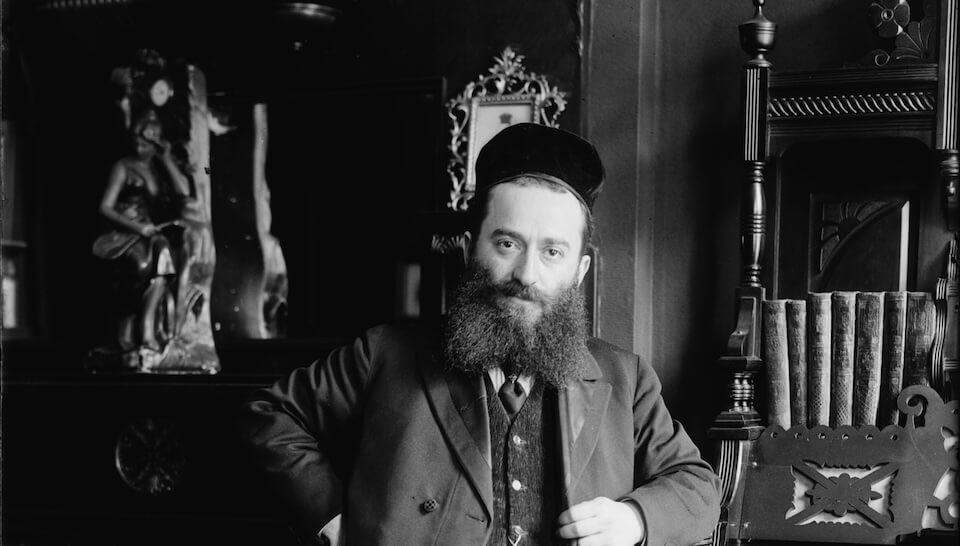The Summer Of Love Was a Bit Scary, Too

Teenagers on their way to Woodstock Image by Getty Images
This article originally appeared in the Yiddish Forverts.
This summer marks 50 years since the iconic Woodstock Music Festival, a joyous, muddy event that took place on a farm in the Catskill Mountains.
The festival, which attracted more than 400,000 people over three days in August 1969, aimed to spread a message of love and peace to the world, instantly becoming a powerful symbol for the counterculture movement and social upheaval of the 1960s — an era when America‘s youth defied the values of the establishment, condemned the conformism of the older generation and called for the spurning of society‘s social norms and expectations.
Mention the 1960s today, and you hear little more than a chuckle and a remark about bellbottoms and tie-dyed shirts. But in fact, during those years, both sides — the young rebels as well as the older defenders of the establishment — took the struggle very seriously. And in the middle of it all, I, a sheltered 12-year-old girl from a traditional Jewish home, looked on, not knowing which side I was on.
My first awareness of any rebellion came in the spring of 1969, when I was a sixth grader: Our teacher made the startling announcement that girls would now be permitted to wear pants to school. The news elicited loud cheers from my girlfriends, but a feeling of dread in me. Rules had always given me a level of comfort, because they made my world predictable and secure. Hearing that an established tradition — of boys wearing pants to school and girls wearing skirts — could be cast off so easily, I wondered what other radical changes awaited us.
My answer came a month later, when my parents shipped me off to summer camp.
This was my third summer at Camp Hemshekh, a Jewish summer camp in Mountaindale, New York, founded in 1959 by Holocaust survivors and members of the progressive organization, the Jewish Labor Bund. I felt very much at home in Hemshekh, because in those years, most of the campers and counselors hailed from Yiddish-speaking homes, just like I did. During the summer, we learned dozens of Yiddish songs, the plays we performed were in Yiddish and every year we commemorated Ghetto Day in memory of the Jewish fighters and victims of the Holocaust.
But that summer of 1969 — the year of Woodstock — everything was different. Compared to previous years, where every bunk followed a daily routine, the mood was much freer; no one forced us campers to do, well, anything. Part of the reason was the change in camp directors; the European-born Michael Baran had been replaced by a young American, Gabe Ross. But no doubt it was also a result of the fact that the day before the campers arrived, a group of counselors had been fired for smoking pot, leaving the camp with a significantly smaller staff.
The haimish Jewish environment I had come to expect at Hemshekh quickly transformed into a purely American expression of hippie culture. Truth be told, I had mixed feelings about it. On the one hand, it was all so strange and unnerving; on the other, it was my first window into a world from which my parents had carefully protected me. My counselors strung beads over every entrance in the bunk and lit incense every morning, filling the room with a sweet, exotic fragrance. The “Hair” album was played from morning ‘til night. As soon as the final song ended, someone turned the record over and started it again from the beginning. After three weeks, I knew all the lyrics by heart.
Although most of my 12-year-old bunkmates were, like me, daughters of Holocaust survivors, you couldn’t tell. Like many Americans of our generation, they wore tight patched jeans; smoked cigarettes — and, no doubt, pot, too — and did things that I naively thought only adults did. One day, I walked into the bunk as several of of my bunkmates were playing spin the bottle with some older boys. When I played this with my friends at home, just planting a peck on a boy’s cheek made us blush. But here, when the Pepsi bottle pointed to someone of the opposite sex, the two kids began kissing passionately, like a scene out of a Hollywood movie. Embarrassed, and once again feeling like the odd man out, I quietly slipped out the door.
The ubiquitous motto of the ’60s — “Don’t trust anyone over 30” — penetrated the conversations of the counselors and, inevitably, the campers. When the older Bundists, most of them parents of counselors, came up to camp and gave a speech, a number of counselors and campers in the audience mocked them. They did so quietly, but loud enough for us to hear it. I confess that I occasionally joined in and laughed along.
My anxieties that summer were encapsulated by a movie that was played for the camp on a rainy day, called “Wild in the Streets.” It told the story of an underground rebel who works his way into the political establishment, leads the fight to lower the voting age to 15 and gets elected president. Once in office, he turns against his older supporters by releasing an edict that everyone over 35 be forced to retire, sent to re-education camps and coerced into taking LSD. I still remember one scene where the “retirees” stood, frightened, behind barbed wire, like prisoners in a concentration camp. The film was obviously meant to be satirical, but, at the time, it scared the daylights out of me. I really thought the sky was falling.
Okay, so I was wrong. The following summer, Baran returned as camp director, and the revolutionary spirit began to dissipate. Once again, the camp was alive with Yiddish music. Many of the so-called rebels eventually became parents, teachers, doctors and other assorted professionals. In other words, they joined the establishment they had once despised.
But from time to time, I think of the summer of ’69, of Woodstock, of the generations at war with each other, of a world that seemed to have gone haywire. And I thank God that my own kids view the ’60s as simply an odd chapter in the history books.






















